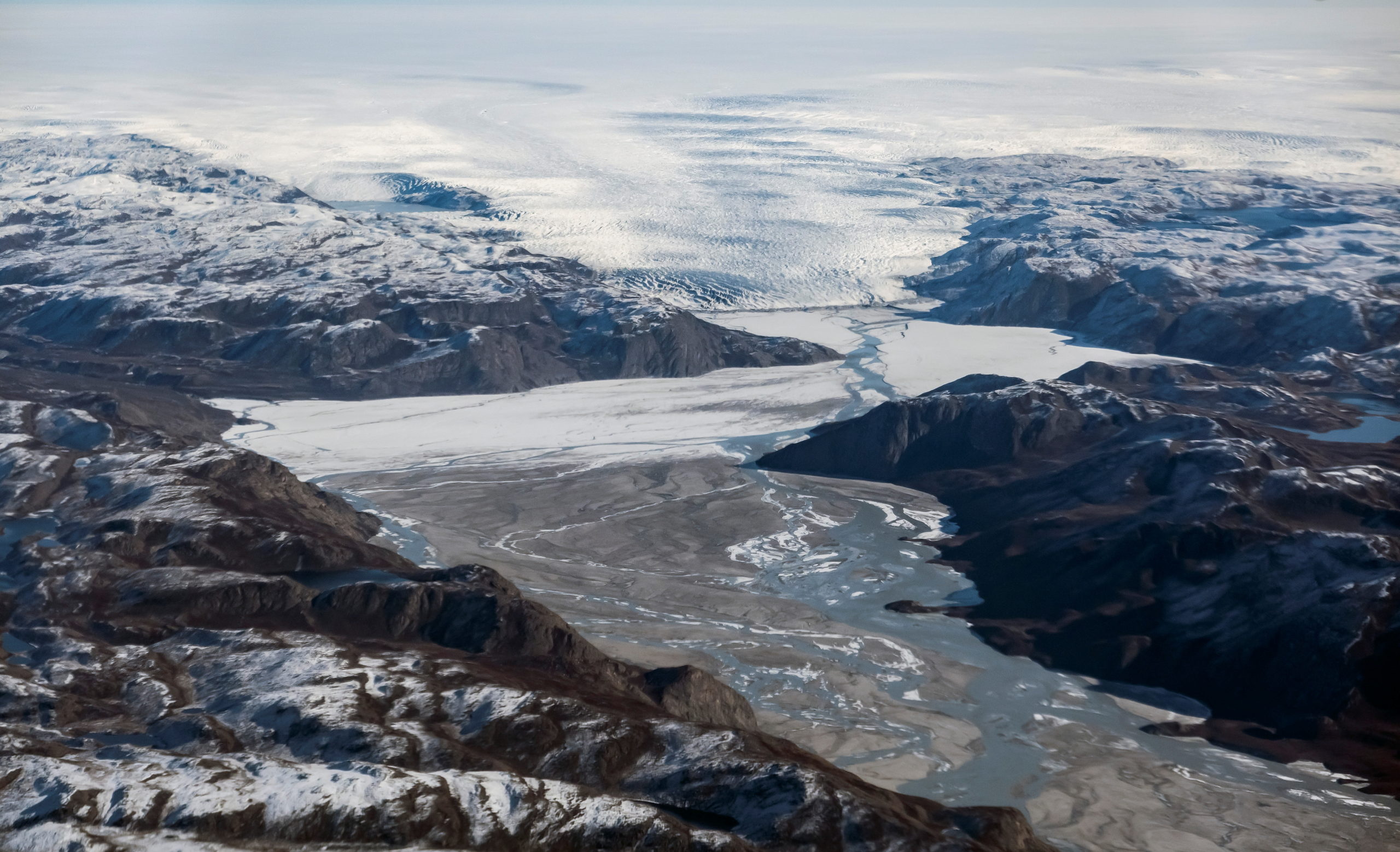Scientists using satellites just got a much clearer picture of how fast Greenland’s ice sheet is melting
The new study mostly confirmed previous estimates with greater precision — but also found more variability.

More than 3.8 trillion tons of ice has melted from the surface of the Greenland Ice Sheet and run into the ocean over the past decade, driven in large part by human-caused climate change, a new study from the University of Leeds and other institutions has found.
That’s enough runoff to cover the entire United Kingdom in some 50 feet of meltwater.
The new study is the first to measure the summer melt loss from the Greenland Ice Sheet directly using satellites. It mostly confirms previous regional climate estimates, but it also found more variability — variability that isn’t yet accounted for in global climate models. The new satellite measurements of runoff should help refine and improve future global projections of sea level rise.
“We find extreme melting events in Greenland are becoming more frequent and more intense as the climate warms. This has significant implications for Greenland’s potential sea level contribution, as it will become dominated by meltwater runoff this century,” said Thomas Slater, lead author of the study. “Raising sea level increases flood risks worldwide” and also disrupts marine ecosystems in the Arctic Ocean, he added. The new research was published recently in Nature Communications and funded by the European Space Agency using measurements from ESA’s CryoSat-2 satellite mission.
[Why we should worry about Greenland’s melting ice sheets]
“In the past decade we saw a significant increase in extreme melt events — the summers of 2012 and 2019 in particular were unlike anything else we’d seen in the past 40 years, as melting was intense and spread farther inland. As the climate warms, we can reasonably expect such melt events to happen more often,” Slater, a research fellow in the Centre for Polar Observation and Modelling at the University of Leeds, said in an email to ArcticToday. The Arctic is already warming about three times as fast as the rest of the world.
Between 2011 and 2020, the researchers found that summer water runoff from Greenland was 21 percent higher than in the preceding three decades, raising global sea level overall by about 1 centimeter (0.4 inches). Slater noted that this is a global average and there are regional differences in sea level rise due in part to ocean currents and variations in land height.
“One centimeter seems like a small amount, but every centimeter will increase the frequency of storm-related flooding in many of the world’s largest coastal cities,” said Slater.
Meltwater runoff is only one way of Greenland loses ice; it also loses ice from glaciers flowing faster into the ocean, and these are raising global sea levels by a similar amount, said Slater.
At 1.7 square kilometers (656,000 square miles, or about three times the size of Texas, according to the National Snow and Ice Data Center) the Greenland Ice Sheet is second only to Antarctica in the amount of freshwater ice it contains.
[As Greenland’s ice melts, its rivers dump more carbon into the Arctic Ocean]
The University of Leeds study is novel in using satellite observations to measure summer water runoff. In comparison, land-based measurements are typically made at weather stations that are expensive and difficult to set up — and therefore sparsely distributed across Greenland. That means “they don’t give us a complete picture of what’s happening across Greenland,” said Slater. In comparison, satellites “allow us to look at the entire ice sheet every month or so.“
“This is a very well documented study that establishes how to utilize satellite altimeter data to quantify accurately that glacial melt not only was highest during the past decade, but that the variability is increasing,” said Douglas Causey, an Arctic researcher and professor at the University of Alaska Anchorage who does research in Greenland, but was not a part of the study. “It provides us with a very precise means to understand what has happened with changes in the Greenland Ice Sheet and what likely impacts these changes will have — on very small time and space scales.” (Disclosure: Causey serves as a visiting scholar at Harvard Kennedy School’s Arctic Initiative where I also serve as a senior fellow.)
The new study comes as the world’s attention is focused on whether the global climate meeting known as COP26, currently taking place in Glasgow, Scotland, will make significant headway in curbing greenhouse gas emissions.
There are reasons to be optimistic, Slater said in a statement.
“We know that setting and meeting meaningful targets to cut emissions could reduce ice losses from Greenland by a factor of three,” he said. “And there is still time to achieve this.”
Cristine Russell is a freelance science journalist, a senior fellow at Harvard Kennedy School in the Belfer Center’s Environment and Natural Resources Program and a member of the school’s Arctic Initiative. She tweets from @russellcris.